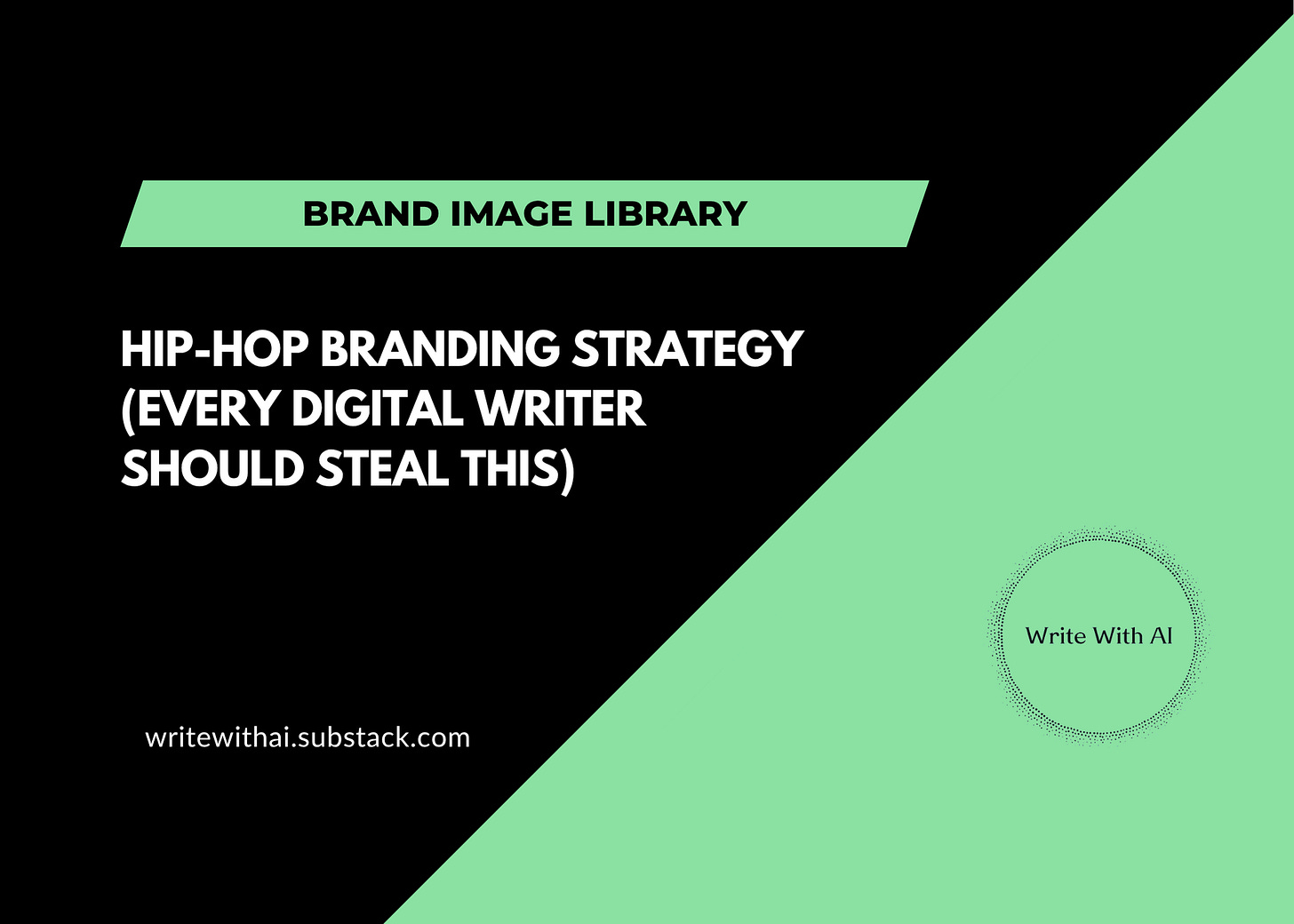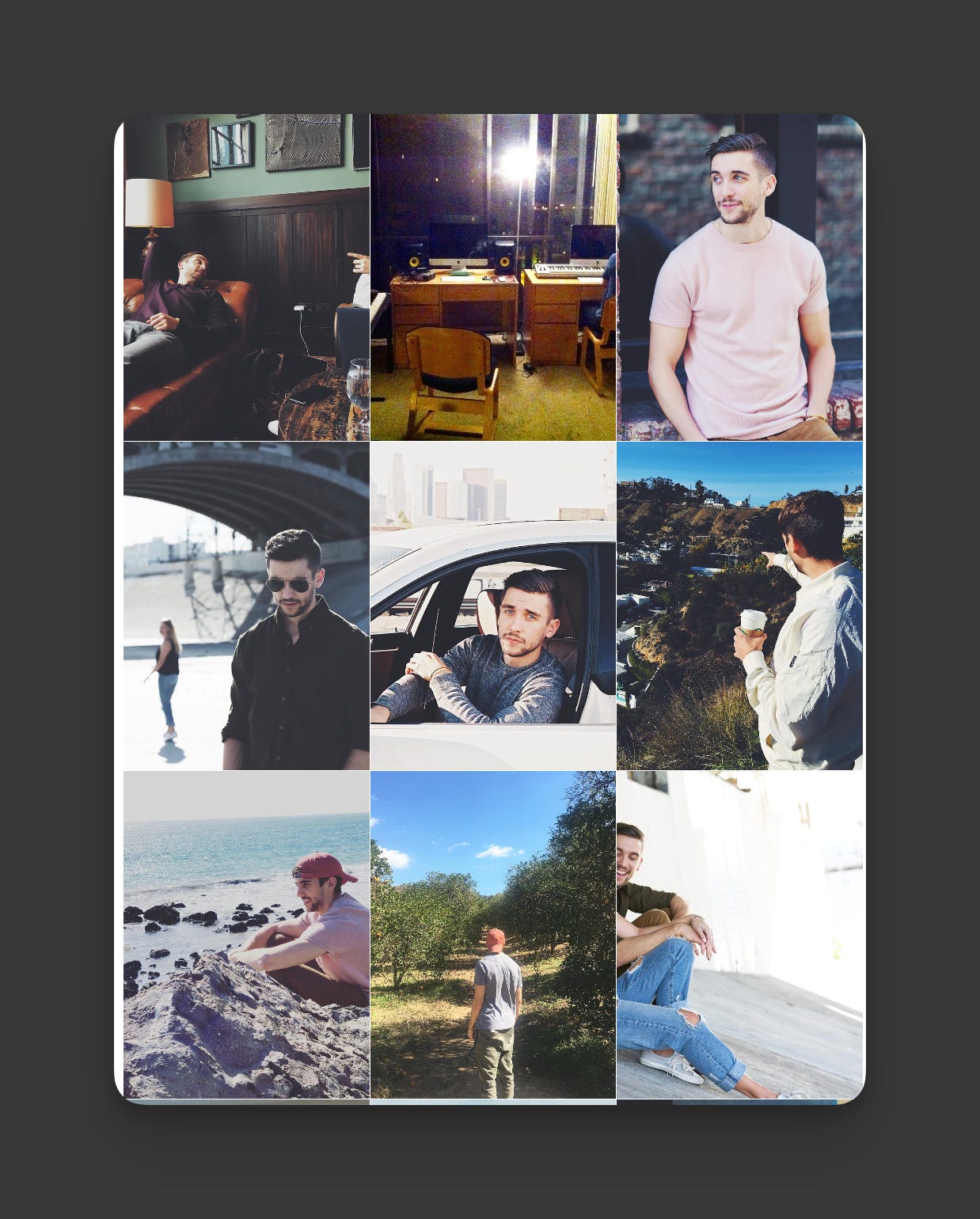How To Build Your Personal Brand Image (Without Hiring A Photographer)
This is bananas!
Back in 2014, I made an observation that changed everything about how I built my career as a writer.
I am a huge rap and hip-hop fan, and I noticed how artists obsessed over their image. Record labels and independent musicians were pouring resources into professional photos, music videos, and carefully curated social media. Even if you’d never heard their music, one scroll through their Instagram told you: this person is a star.
This is Branding 101.
But when I tried to apply that to writing, I hit a brick wall.
It didn’t exist.
“Writers write. They don’t do social media.”
All my favorite authors were basically invisible online.
They publish incredible works of art and literature, but then their Instagram account consists of random photos of their cat every seven months, or a picture of what book they’re reading on a vacation from three years ago. Unless a writer used Medium, Quora, or their own site to share their thoughts, they didn’t really exist anywhere else.
Nearly everyone I pointed this out to said:
“That makes sense. Writers write. They don’t do social media.”
But as a 23-year-old with zero resources and determined to build myself into a successful, fully independent writer, I saw this as a massive opportunity.
I decided to take the branding playbook of an up-and-coming rap artist and apply it to myself.
If rappers hired photographers to take on tour with them and capture candid photos of them behind the scenes, then I was going to do the same thing in my everyday life.
If rappers made their Instagram pages give the impression that they were this massive superstar, then I was going to do the same thing.
If rappers had creative directors, then I was going to be my own creative director.
The only problem was, I couldn’t afford a super-expensive photographer.
How I Built My Personal Brand Image As A Writer
Columbia College Chicago had a website where students could collaborate on projects.
I’d been out of school for a year but still had access. I searched for photography students. What I found: they desperately needed models for class assignments. “Looking for a model for a nighttime shoot.” “Looking for model for experimental portrait.” They needed me as much as I needed them.
I emailed 20 students. A few responded. And I just started showing up.
I was terrible at modeling.
“Look at me like you’re thinking about something,” one photographer said.
I thought I was doing it.
“No, like... actually move your face. Make a different expression.”
I had no idea what she meant.
“No, okay, so like, uhm. You know what, never mind.”
I collaborated with probably ten different photographers in 2014. Most pictures never saw the light of day. I was really, really bad. But every once in awhile, one turned out amazing—usually by accident, from afar, looking almost candid.
I decided that documentary look was going to be my style.
From 2014 to 2017, this is how I populated my Instagram page (which now has more than 85,000 followers, despite the fact that it’s not really my primary platform).
And that’s how I started to build my image as a writer online.
Now I have the resources to invest more deliberately in this part of my personal brand (which I firmly, firmly believe is one of the best investments you could possibly make in yourself). When I moved to LA, I started collaborating with a very talented photographer named Walid Azami, who has photographed everyone from Usher to JLO to Kanye West.
When people comment on my work today, one of the first things they bring up is the fact that, unlike most other writers, I am extremely visible. I attach pictures to nearly everything I write and do. As a result, I appear as more than just a writer — which was my entire goal from the beginning.
“But I don’t want to take selfies!”
You don’t have to.
You can build an audience without ever posting a single photo of yourself.
However…your readers don’t just follow your content. They follow YOU. ****Including personal photos is a simple way to make your writing feel more human—and your brand more memorable. Images help your readers feel like they know you (even though you’ve never met). Which means you become someone they recognize, remember, and ultimately trust.
So if you want more engagement from your audience, stop hiding behind your content.
Let people see you.
The good news is, you don’t need a camera, a photographer, or even a photoshoot to do it.
How To Build An Engaging Personal Brand Photo Library For Social Media With Nano Banana
Google’s new Nano Banana (part of Gemini) lets you upload one good photo and remix it into countless new ones.
You can change the setting, outfit, hairstyle — even the decade — all with words.
Need a photo for a post about productivity? Put yourself in a coffee shop.
Writing about travel? Drop yourself into that destination.
Need variety? Generate ten versions of the same look.
Back in 2014, no writer was doing this—and it helped me stand out.
It still works.
And you can start doing it today.
For free.
Here’s the step-by-step playbook to generate a professional-looking brand photo library in minutes:
Step 1: Secure Your “Anchor Photo”
To build a consistent brand, you need one, single, high-quality image that Nano Banana will use as your “Anchor.”
This is the photo the AI will reference to keep your face, build, and overall likeness consistent. Choose a headshot or a half-body shot where you are well-lit, looking directly at the camera, and wearing a neutral or simple outfit.
A basic selfie or a friend’s photo works perfectly.
Example:
Keep reading with a 7-day free trial
Subscribe to Write With AI to keep reading this post and get 7 days of free access to the full post archives.




